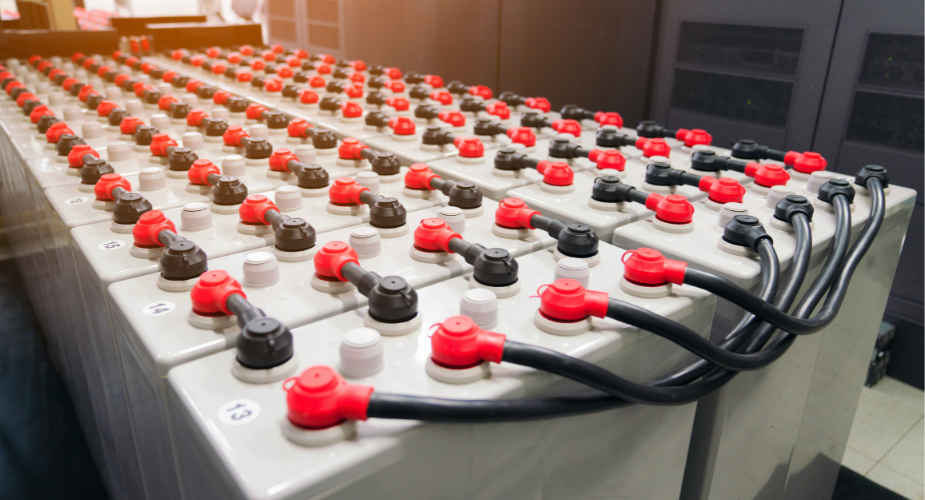Off the grid means living without relying on the main electric power system. Instead, people use their own energy sources like solar panels or wind turbines. In today’s world, more people want to live in a way that’s better for the planet. They also want to save money and avoid power outages. That’s why off grid power solutions are becoming more popular. In 2025, many homeowners, travelers, and people in remote areas are looking for smart, reliable ways to produce their own electricity. These solutions help support a more independent and sustainable lifestyle.

Your Complete Guide to Off Grid Power Solutions
- Benefits of Off-Grid Power Solutions
- Main Types of Off the Grid Power Solutions
- Smart Battery Storage Options for Reliable Off-Grid Power
- Choosing the Right Off-Grid Power Solution
- What to Watch Out for When Using Off the Grid Power Solutions
- A Smart Solution for Reliable Off-Grid Power
Benefits of Off-Grid Power Solutions
Off the grid power systems are becoming more popular as people look for ways to take control of their energy use. Not to mention, these systems and solutions allow you to produce your own electricity without relying on the main power grid. They are especially useful for those who live in remote places or want to reduce their impact on the environment. Choosing off the grid power solutions comes with many long-term benefits, including the following:
-
Freedom from utility companies - You gain full control of your electricity without depending on public power providers or paying monthly bills.
-
Lower long-term energy costs - After the initial setup, off the grid power systems can save you money by reducing or eliminating your energy expenses.
-
Eco-friendly and renewable options - Most systems use solar, wind, or water power—clean sources that help protect the environment and reduce carbon emissions.
-
Ideal for remote or rural areas - Off the grid power solutions work well in locations far from city power lines, making them perfect for cabins, farms, or mountain homes.
Main Types of Off the Grid Power Solutions
There are different ways to get electricity when you're living off the grid. The best choice depends on where you live, how much power you need, and your budget. Below are the most common off-grid power solutions:
A. Solar Power Systems
Solar power is the most popular way to produce off-grid electricity. It uses sunlight to make power for your home or cabin. A basic solar setup includes:
-
Solar panels – collect energy from the sun.
-
Charge controller – controls how much power goes to the batteries.
-
Inverter – this converts solar energy into electricity that you can use.
-
Batteries – store power for night-time or cloudy days
Pros:
-
Clean and renewable
-
Low maintenance
-
Works well in sunny areas
Cons:
-
Costly at first
-
Doesn’t work well without sunlight
Best for: Homes, cabins, or RVs in sunny locations.
B. Wind Power Systems
Wind power uses the wind to make electricity. Small wind turbines are often used along with solar power.
How it works:
The wind makes the blade spin on the turbine, which powers a small generator to make electricity, and that is a simple example of how one of the common off the grid power solutions works.
Pros:
-
Great for windy areas
-
Can work day and night
Cons:
-
Needs strong, steady wind
-
It can be noisy and take up space
Best for: Open areas, hills, or places near the coast with lots of wind.
C. Micro-Hydro Power
Micro-hydro power uses moving water—like a stream or small river—to make electricity.
Works best in:
-
Places that have steady, flowing water all year long.
-
What it needs:
-
A small water turbine
-
Pipes to move the water
-
Some regular care to keep it running smoothly
Limitations:
-
Only works if you have a stream or river nearby.
-
Water levels may change with the seasons.
D. Portable and Hybrid Generators
Generators are a helpful backup for off-grid setups. They run on fuel like gasoline, propane, or both.
Why use one:
They can give power when your solar or wind system isn’t enough—like during storms or cloudy days.
Fuel options:
-
Gas
-
Propane
-
Dual-fuel (can use both)
How they work with other systems:
Many people combine generators with solar or wind systems for extra reliability.
These off grid power solutions can be used alone or mixed together to build a system that keeps your home powered anytime, anywhere.
Smart Battery Storage Options for Reliable Off-Grid Power
Battery storage is a key part of off-grid power solutions. Since solar and wind energy are not always available (like at night or during calm weather), batteries store extra power so you can use it later when needed. Without batteries, your off-grid power solutions wouldn’t be reliable.
There are two main types of batteries used in off-grid setups:
-
Lithium-ion batteries – These are more efficient, last longer, and charge faster. They cost more upfront but are a smart long-term investment.
-
Lead-acid batteries – These are cheaper but heavier, need more maintenance, and have a shorter lifespan.
In 2025, some popular off-grid battery brands include Tesla Powerwall, Bluetti, EcoFlow, and Renogy. These batteries are known for good performance, durability, and ease of use, making them great choices for anyone living off the grid.
Choosing the Right Off-Grid Power Solution
Finding the best off grid power solution depends on your unique needs and situation. There’s no one-size-fits-all system, so it’s important to think carefully before deciding.
Here are a few key factors to consider:
-
Location – Is your area sunny, windy, or near-flowing water? This helps determine whether solar, wind, or hydropower will work best.
-
Energy usage – Make a list of the appliances and devices you use daily. The more energy you need, the larger your system should be.
-
Budget – Some systems, like solar with lithium batteries, cost more upfront but save money in the long run. Choose what fits your budget and goals.
To get started, calculate how much power you need each day. Wherein you can use some of the online energy calculators or talk to an expert to help estimate the right system size.
Lastly, decide whether to install the system yourself or hire a professional. DIY options can save money, but professional installation ensures everything is safe, efficient, and done right, especially for larger setups.
What to Watch Out for When Using Off the Grid Power Solutions
Off the grid power solutions can give you freedom and save you money, but they also come with a few challenges. The good news is that you can avoid most problems with the right planning. Here are some things to keep in mind:
1. Weather problems
Solar panels need sunlight, and wind turbines need wind. If the weather isn’t right, your system may not make enough power. To fix this, you can use batteries to store extra power or have a small generator as a backup.
2. High starting cost
Buying everything you need—like solar panels and batteries—can be expensive at the beginning. But you can start small and add more parts over time. Some people also look for discounts or government help to lower the cost.
3. Taking care of your system
Like anything else, your system needs to be checked and cleaned. For example, batteries might need to be replaced after a few years. Choose good-quality products and try to check them regularly so they last longer.
With the right setup and a little care, off the grid power solutions can give you a strong and steady source of energy for years to come.
A Smart Solution for Reliable Off-Grid Power
If you're looking for reliable, all-in-one off-grid power solutions, the MyGrid 10K Solar and Wind Generator for Home is a great choice. It’s built to provide strong, flexible, and eco-friendly energy for homes, cabins, RVs, and remote locations. Whether you're just starting your off-grid journey or looking to upgrade your current setup, this system is designed to make things simple and dependable.
Key Features:
-
Fast and Easy Setup - The plug-and-play design means you can install and move it easily—no complicated wiring is needed.
-
Powerful 10kW Generator - This solution combines solar and wind energy with a 120V/240V output and a 10,496Wh battery to power your entire home or off-grid setup.
-
Expandable and Scalable - Need more power? You can add extra batteries, solar panels, or even connect a second MyGrid 10K unit to reach up to 20kW.
-
Compact and Space-Saving - Its slim design fits perfectly in small spaces—whether it’s a house, apartment, RV, or workplace—without taking up too much room.
-
Perfect for Off-Grid Living - Built to deliver consistent power in remote areas, combining both solar and wind energy to reduce reliance on weather conditions.
-
Eco-Friendly & Versatile Charging - You can charge it with solar panels, wind turbines, regular wall outlets (AC), or a generator—giving you full control over how you power up.
-
Dual Voltage Support - Works with both 120V and 240V, so you can run everything from lights and laptops to bigger appliances like fridges or pumps.
-
Intuitive LED Display - Easily monitor battery levels, energy use, and backup reserves—so you’re never caught off guard.
How MyGrid 10K Solves Common Off-Grid Challenges:
Weather Dependency: By using both solar and wind, it ensures you have power even when the sun isn’t shining or the wind isn’t blowing.
Energy Storage: With a high-capacity 10,496Wh battery, it stores more power to keep you going through the night or cloudy days.
Scalability: You can grow your system as your power needs increase—ideal for families or anyone expanding their off-grid setup.
Conclusion
To sum it up, off grid power solutions are a smart way to take control of your energy use, reduce monthly costs, and live more sustainably, especially in remote areas or during power outages. By learning about the different systems, storage options, and challenges, you can make a confident choice that fits your needs. For a reliable and flexible off-grid setup, the MyGrid 10K Solar and Wind Generator is a great option. It combines solar and wind energy, offers expandable power, and is easy to install, making it a strong partner for your off-grid journey.






 10,000W LIFEPO4
10,000W LIFEPO4









